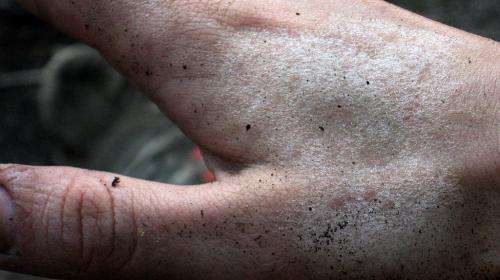Safety gaps found after pesticide review

A review of pesticide use in workplaces recommends increased training, better safety compliance and replacement of the most hazardous pesticides to improve worker safety.
The collaboration involved The University of Western Australia, Monash University and the University of Melbourne and looked at over 80 studies on the health effects of pesticide exposure, pesticide-related tasks, factors affecting absorption and use of personal protective equipment.
While inhalation is often viewed by the public as the principle route of pesticide exposure, the review found that skin contact was most common, with respiratory entry limited, likely due to the low vapour pressures of many pesticides.
This misconception has shed light on several gaps in safety.
Professor Lin Fritschi (now at Curtin University) says that while proper equipment has been shown to reduce pesticide exposure, workers' use of clothing providing basic skin covering when applying chemicals was shown to be far from ideal.
"In Australia, one likely reason for the lack of personal protective equipment worn by workers is thermal comfort," she says.
"As the protection afforded by protective clothing increases, the breathability of the fabric is generally decreased, meaning it is less comfortable to wear in warm conditions.
"So, although pesticide workers may appreciate the protective benefits, they may avoid using personal protective equipment because of physical discomfort."
Prof Fritschi says exposure risks and protective requirements vary between pesticide-intensive occupations, which include agricultural workers, pest controllers, parks and gardens workers and foresters.
"Each of these has a distinctive pesticide exposure profile due to differences in the context and purpose of pesticide use," she says.
"For example, pest control operators—while a small percentage of the pesticide-exposed workforce—have a very different exposure pattern to farm workers, as they contend with the effects of working in built environments and applying pesticides indoors, including restricted spaces."
Highest exposure to pesticides was found to occur not during application, but during the mixing and loading stage, when workers dealt with concentrated product and higher risks of spillage.
The research highlights other exposure factors including hot conditions when increased skin blood flow leads to increased circulation of pesticides within the body.
The research also notes that the active ingredient of sunscreen may promote penetration of agents through the skin, and that synthetic materials can offer between four and seven times more protection than cotton.
Prof Fritschi says the task now is to investigate how to make workplace training and awareness more effective.

















